History and Origins
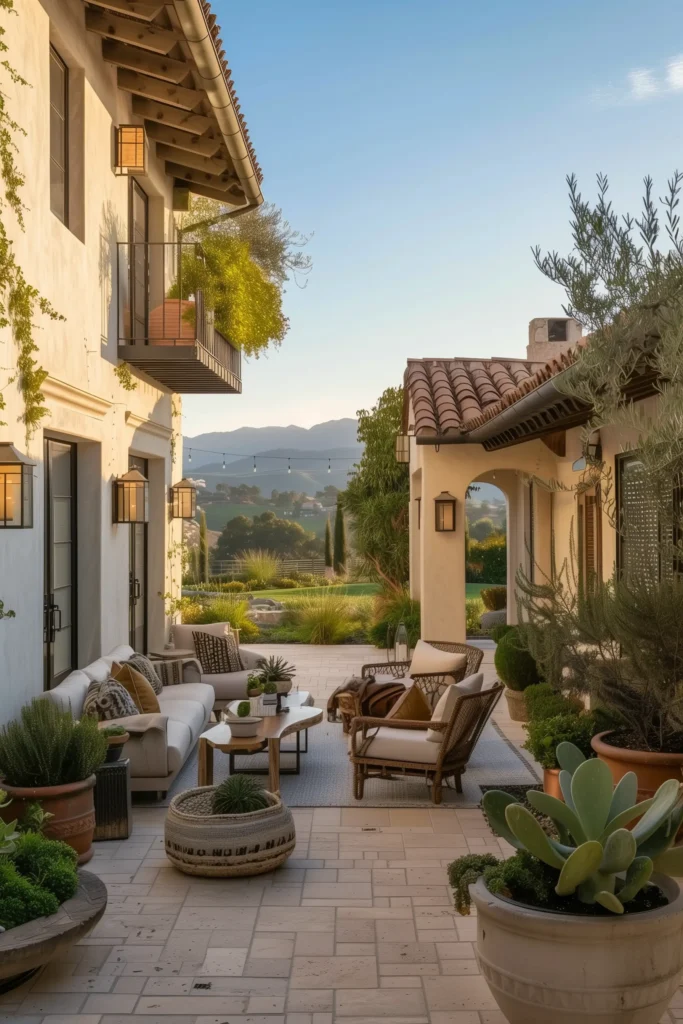
The Mediterranean patio epitomizes coziness, beauty, and harmony, originating on the shores of the Mediterranean Sea. Initially, patios appeared in ancient Roman houses as courtyards with a central pool where residents could enjoy coolness during hot days. This tradition has been preserved and developed in various cultures of the region, combining architectural elements from Italy, Spain, Greece, and North Africa.
Architectural Features and Style
Mediterranean patios have unique characteristics that make them special:
- Materials: Typically constructed from natural materials such as stone, terracotta, and wood, adding warmth and a natural feel to the space.
- Color Palette: Warm shades of white, beige, and terracotta create a sense of light and openness.
- Vegetation: Lush greenery is a must-have. Lavender, olive trees, citrus plants, grapevines, and various flowering shrubs add vibrancy and fragrance.
- Decorative Elements: Ceramic tiles, fountains, arches, and carved wooden details add authenticity and artistic appeal.
What Can You Do in a Mediterranean Patio?
The Mediterranean patio is an ideal place for relaxation, entertainment, and creativity. Here are some ideas on how to utilize this space:
Relaxation Area: Install comfortable furniture—wicker chairs, hammocks, soft sofas, and cushions. Add candles, lanterns, or fairy lights to create a romantic evening atmosphere.

Outdoor Dining: Set up a dining area with a large wooden table and chairs. Arrange for a grill or outdoor oven for cooking al fresco meals.

Gardening: Create your own garden with aromatic herbs, flowers, and vegetables. This will not only decorate the patio but also provide you with fresh produce.

Creative Workshop: Use the patio as a place for creativity—paint, sculpt, write, or engage in other forms of art under the open sky.

Meditation and Yoga Zone: Create a corner for meditation and yoga. A tranquil space among greenery will help you relax and find inner peace.

How to Create a Mediterranean Patio at Home?
- Choose Materials: Use natural materials. Stone or terracotta floors add authenticity. Wooden furniture and decor elements are also key.
- Green Oasis: Place plenty of plants. Lavender, rosemary, olive trees, citrus plants, and flowering shrubs will create the desired atmosphere.
- Decor: Use ceramic tiles, fountains, and carved details. Add cushions, rugs, and textiles in warm colors.
- Lighting: Install lanterns, candles, and fairy lights for soft and cozy evening lighting.
The Best 30 Mediterranean Patio for your life
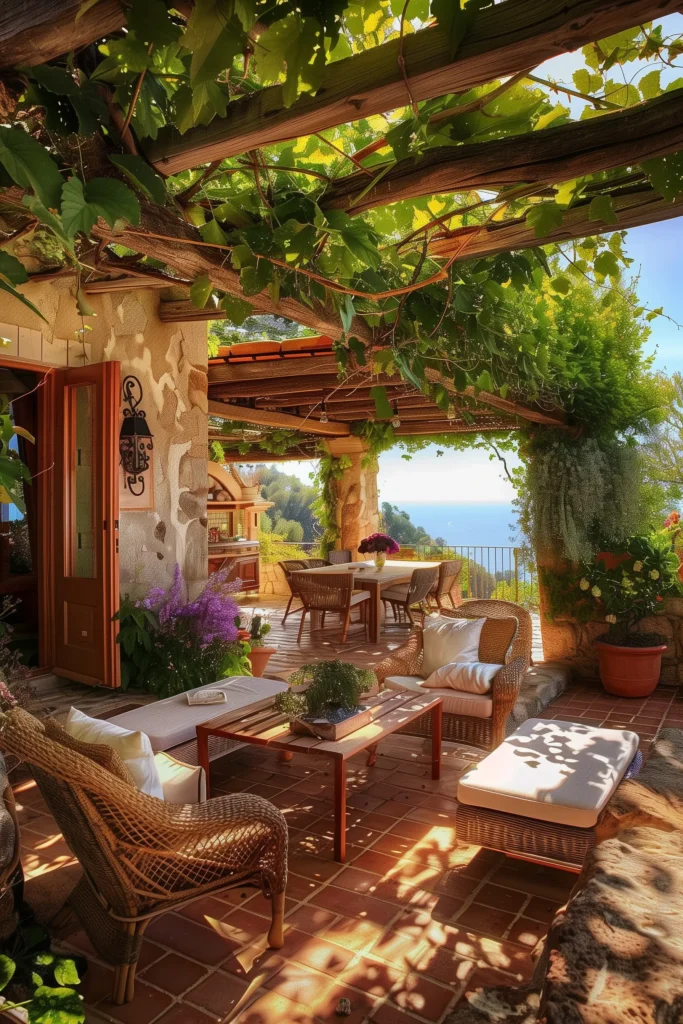








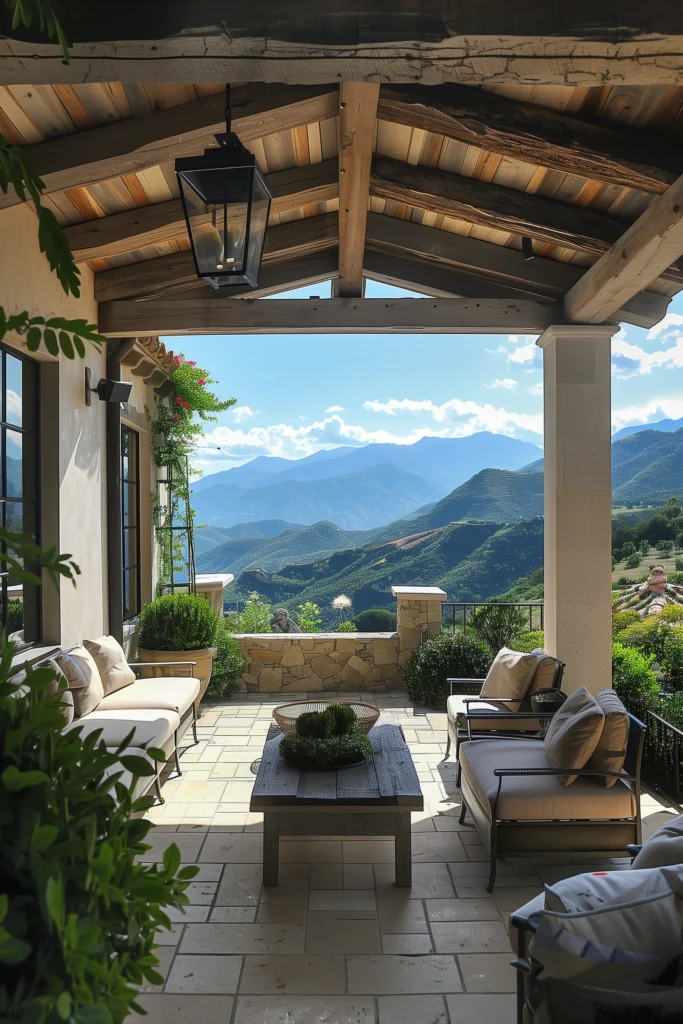








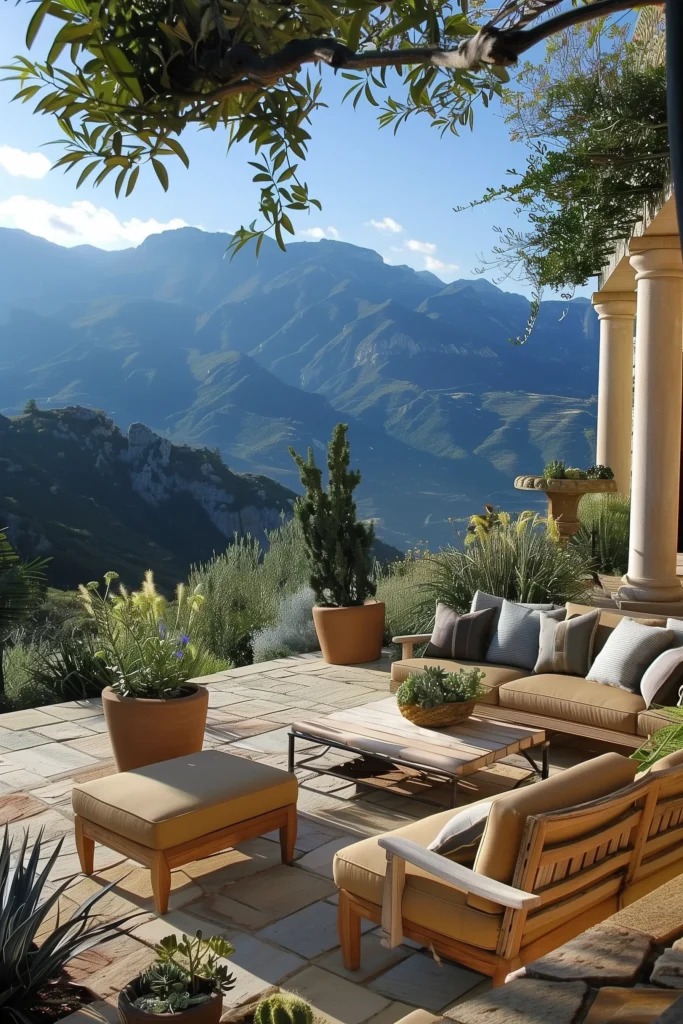




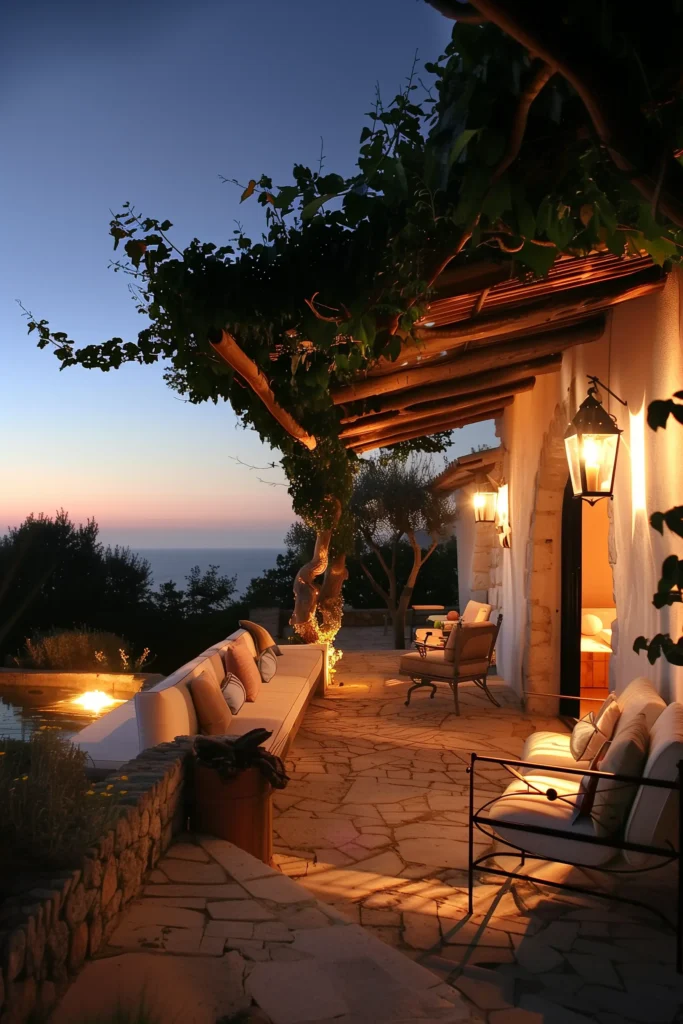




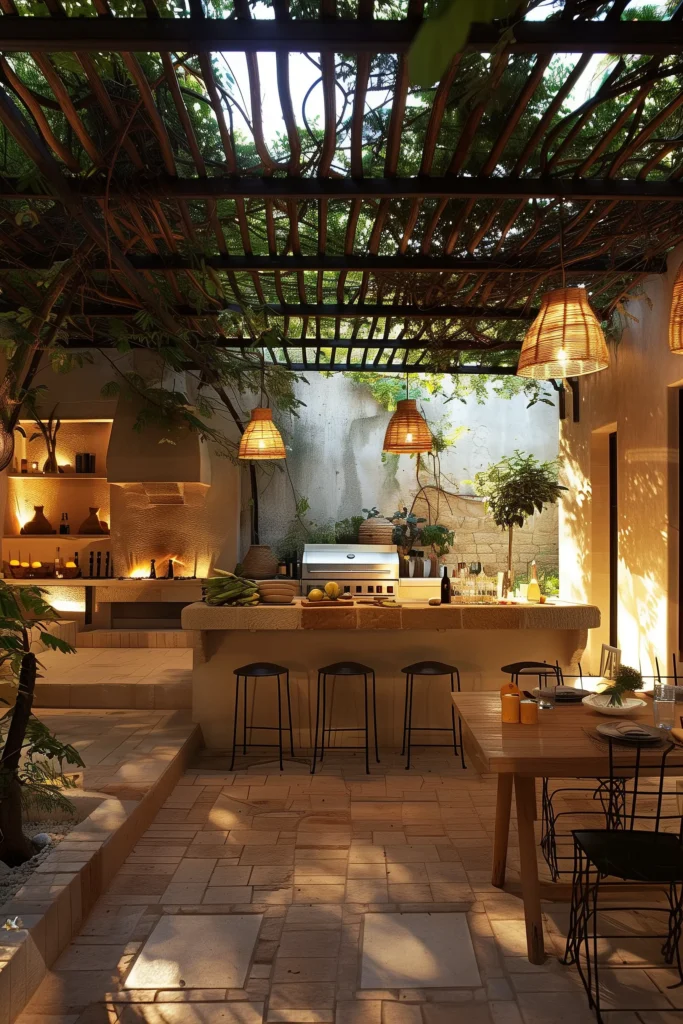

Advantages of a Mediterranean Patio
The Mediterranean patio has many benefits:
- Cozy and Comfortable: It provides a private and comfortable space for relaxation.
- Aesthetics: Beautiful patio design adds aesthetic appeal to your home.
- Functionality: The patio can be used for various purposes—relaxation, hosting guests, creativity, and gardening.
- Connection with Nature: Proximity to plants and open space promotes a sense of harmony with nature.
Conclusion
The Mediterranean patio is not just an architectural element but a lifestyle that brings joy, peace, and inspiration. Use its possibilities to the fullest, and it will become your favorite spot at home. Whether you live in a hot Mediterranean climate or a cooler part of the world, the Mediterranean patio will always provide warmth and coziness.

